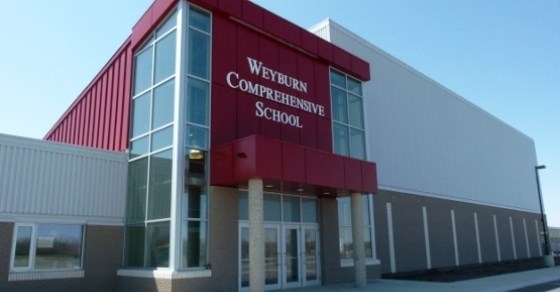The average size of classes in the Southeast Cornerstone School Division is 20.43 students, which the school board should be proud of in spite some anomalies, said education director Lynn Little.
She presented a report on class sizes from around the school division on what the class sizes are and how they’re determined, after the issue was raised at an earlier board meeting by the head of the Cornerstone Teachers Association, Karen Kennedy Allin.
In her presentation to the trustees, she said Cornerstone teachers are under a lot of stress, and one of the factors in that was the size of classes.
There are 2,685 courses being delivered in Cornerstone’s 37 schools, and the average of class sizes by school ranges from 13 (at Pangman School) up to 23.4 (which is the average for the Weyburn Comp).
There are six classes with more than 40 students, three of them at the Weyburn Comp. One is Grade 8 band, one is the combined Grade 10-11-12 band, and the other is the combined high school choir.
Four classes have between 36 to 40 students, including the Choral 10 class at the Weyburn Comp.
A total of 75 classes have between 31 and 35 students, with Estevan Comp having the largest number of those classes (23), while Lyndale School at Oungre has five classes that size, Queen Elizabeth School has nine, and the Weyburn Comp has 15 classes that size.
The class sizes are determined at the school level with input of the staff, said Little, with many factors going into how each of those classes are set up. For example, she noted a number of classes include kindergarten students, and they are only there every other day.
Of the remaining 2,600 classes, 411 are between 26-30 students; 922 have 21-25 students; 712 have 16-20 students, and 555 classes have 15 students or less.
Any classes where kindergarten and Grades 1 and 2 classes are combined with more than 15 students, there are education assistants (EAs) in those classes, plus students with designated needs have learning support teachers (about five per cent), plus there are support staff, including 16.5 FTE student services counselors, 8.6 FTE speech-language pathologists, one occupational therapist (with a second joining in February) and 2.5 educational psychologists.
“During the difficult budgetary years that we have encountered over the past four or five years, the board of education has made frontline staff a priority,” said Little. “While we do have some anomalies of higher numbers in a select few classes and schools, a system average of 20.43 is something to be proud of.”
She noted that the staffing formula for the school division is driven by student enrolment, and on top of that they add admin time, response to intervention time, learning support teacher time and unassigned time.



